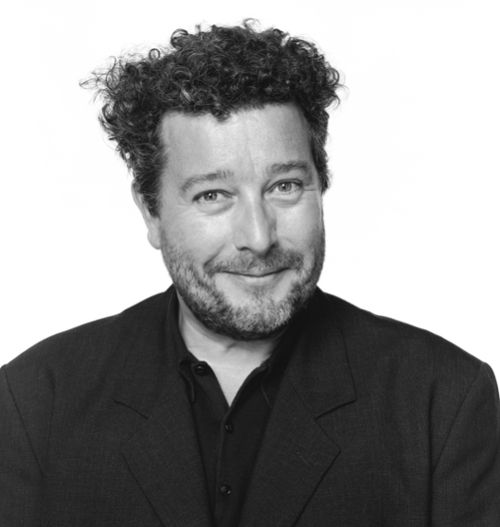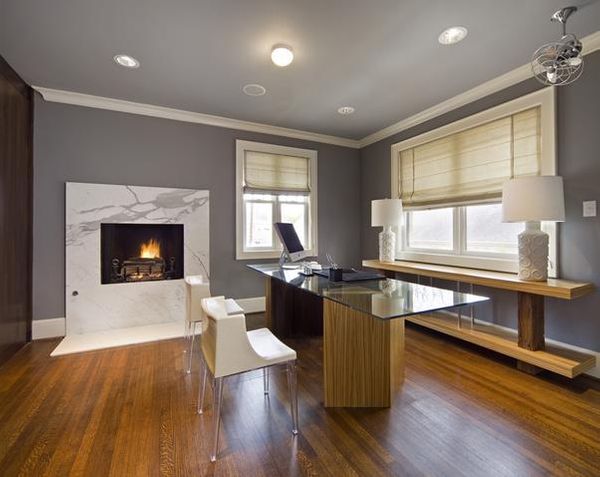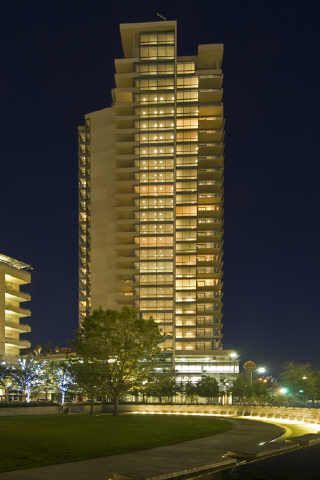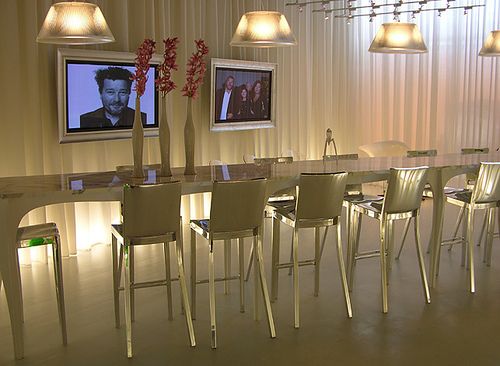And to think it all started in Paris, New York and Dallas. Yes, Dallas. Philippe Starck created a sensation in the mid-80’s in Dallas by creating the first European-style nightclub, called appropriately, Starck Club. It took the city by storm, as well as the state. It was a complete contrast to the ostentation of the times. When the television series Dallas was showing how the Texas oil rich supposedly lived, Texas native Victor Costa ruled the society ball scene with his over-the-top billowing ball gowns. Then something happened. Philippe Starck brought cool and clean to what was, at that time, a very cluttered state. From his five-minutes-from-now contemporary vision sprang a streamlined, white warehouse club that the world, and certainly not Texas, had ever seen before. I was there the night Grace Jones came in riding an elephant during the 1984 Republican Presidential Convention. And the night Prince had a party after he performed at nearby Reunion Arena. Everyone has a story about the Starck Club. And the city of that era.
Lance Avery Morgan: How different is it working in Dallas now, than when you were here in the 80s?
Philippe Starck: It’s a huge difference. When I arrived over 20 years ago, downtown
Dallas was a ghost city, everything was empty. And when I said that I wanted to make the Starck Club downtown then, people laughed. They said “Oh, you’re completely crazy – nobody will come.” And because of those presumptions, I think we were the first.
LAM: You were the first big city night club of that level in Texas.
PS: Yes, and the first thing like it downtown, and I think we have really rocked. And the ghosts have come to revisit.
LAM: They certainly have with your new House project. You’re a pioneer.
PS: Just for being downtown. The cultural level of Dallas has incredibly increased in 20 years. The sophistication. The people.
LAM: And J.R. Ewing-types. No more of those, really.
PS: Ah, yes.
LAM: During the ‘80s when your club was so popular, he probably came there… J.R… you know, Larry Hagman.
PS: Lots of important people came to the club.
LAM: Right.
PS: So, before, it was really difficult to bring a new idea and things like that. Now Dallas is one of the main important international cities in the world. That’s why everybody’s here… our tribe. That’s why we don’t have to fight for the vision, no need to explain.
Starck’s design theory is deeply connected to what he calls The Tribe. Call it The Cool Factor, but call is a movement. It’s the thought leaders, the trend setters and key influencers in urban areas who have what many people call, a high ‘get it’ factor. Here he explains how that affects his design theory.
PS: You know I’ve tried it every way. I worked with people everywhere… in Dallas, in Miami, in Hong Kong, and everywhere like that. And when they need us, they call us and we come. If a city doesn’t call us, that means there is not our ‘tribe’ in the city that may call us.
LAM: So it’s really a mind set and if the mind set isn’t there, you wouldn’t want to do a project in that city anyway?
PS: No, absolutely not.
LAM: What do you think about the prefabrication movement of the world? It doesn’t seem very tribe-like.
PS: When everything is pre-fab, people become do like a cow or a machine. It’s the end of humanity. Then there becomes a point to where nothing is bad and also, nothing is good. Industrialization, the mechanization of a good product, can be very good. If you see a product where the price matches the quality of it, fantastic. Only with mass industrialization, I think, will we make more than one million of things like that.
LAM: One million things of good design. Speaking of which, I’m sitting in the Ghost chair that you’ve designed. But is doesn’t feel like a product for the masses.
PS: We think that we are speaking with a voice. We think that we can build a universal chair, where no one is aware butt, by definition, everybody has it. We feel like we should create that. That’s what is so interesting. We must always choose industrialization with the beautiful chair that is good for our home. That’s why it works in a building like this. We can help our friends avoid mistakes. That’s all. It’s very simple. Very friendly. Very clean.
LAM: It’s that voice that’s gotten you to where you are today…
PS: Basically, I’m not the best designer, but I am the only one who has tried for over 20 years to give the best to the maximum of people. I think the real elegance was not the likes of Monet, but the likes of intelligence and the likes of happiness. That’s why I have tried to solve every problem. I hope to help my friends have a better life.
To some who want to have a better life, they are committed to choosing a home like what Starck is designing… The House by Yoo at the W Victory. What might seem like just another development to some is actually much, much more. “Philippe Starck is known throughout the world for cutting-edge designs that reflect the sensibilities and sensitivities of a modern consumer,” Jonas Woods, president of Hillwood, told me. “Starck and YOO at Victory Park underscores the level of elegance and sophistication that personifies this exciting and energetic new urban community,” Woods goes on to say. The vision where a resident can live, work and play in one space is a very futuristic version of the dense urban movement happening not only in Texas, but in other cities across the state and the world. People want to have a sense of community and feel the suburbs might not be the answer for them anymore.
So, future owners here at The House by Starck and YOO will be a part of 150 residences, 140 one to three bedroom units ranging from 1,000 to 2,000 square feet located on the fifth to the 22nd floor. The building will also have 10 penthouse units of two to three bedrooms plus dens ranging from 2,000 to more than 3,500 square feet on the upper four floors. Penthouses on the 25th floor are two-story units with spectacular panoramic views of the cityscape. And the building also features 30,000 square feet of retail space on the ground level that is slated to become the home of an upscale grocery store, restaurants and boutiques. If that’s the future, the future seems quite grand.
LAM: Buying a home is a huge expense. Why live here at The House? Why now?
PS: The home is the biggest expense of your life. And you cannot make a mistake. If you are amused by a trend and you buy a pink jacket, you can always put it in the garbage when you are tired of it. Not a home – that’s crazy. That can be very dangerous for your mind and for your family. That’s when John Hitchcox at Yoo came to ask me if I want to do this building, I said, ‘To do what?’
LAM: And Yoo wanted to build something different than a typical building?
PS: Right. And finally we created this concept called Yoo because it’s distinguished completely different from other people of real estate who build faster, and think that selling faster and build larger is the answer. Until they try to actually {live} in the apartment, then if there are problems, that attitude is ‘It’s not our problem.’ We are quite the contrary. We have a lot less business, even if it is a huge success, because we’re really here to help our friends. We don’t try to please everybody, but we try to please the people who think like us. Where they share our values.
LAM: Values are crucial in good design. What are yours?
PS: Our values are human values. That means we don’t speak about picture, architecture, steel, concrete, aluminum. We speak about honesty, vision, love and things like that. And it makes a huge difference because when you apply these values to the final project, it’s different. That’s why it is one of our big successes.
LAM: Walk me through your vision of House here.
PS: The project is very real and the process of Yoo is very simple. After we work on the floor plan to be sure we have a very modern floor plan, we work a lot on the managing of energy for the couple, the family and things like that. When people are at the apartment, we urge them to find what they are. That means that everyone is different. We know the style of the home, for the basic, we don’t need to consider complications for the family, like nature, classic, picture. That’s why people have gotten to look at the plan, and say ‘Oh, I feel classic.” so okay, your floor will be this, your counter in the kitchen will be that. Things like that. You cannot move the style, that’s why we don’t design the place. And because I know my job. I can help my friends to build their own idea. Their own home. Their own life. Which is more important than buying the prefabricated life from the designer.
“Understanding the Universe is the key to understanding ourselves,” says Philippe Starck. He’s been a part of a rarified design universe since opening his design firm in the late 60s that specialized in inflatable objects. He then made a splash by designing two Parisian discos in the 70s that caught the eye of the President Francois Mitterand, who asked Starck to refurbish one of the private apartments in the Elysee Palace.
LAM: Let’s go back to some of your original spaces, like in Paris. The 70s night clubs, the apartment for President François Mitterand. Tell me about how that changed your life.
PS: You know, I’m not really a city guy. I’m not really a fancy guy, either. I started in night clubs just by luck because some friends found the place and we said, “Oh, perhaps we can make something to bring the tribe all together.” And because I arrived completely away from the nightclub business, I brought fresh ideas, and a sort of natural violence, so it was a huge success. We completely exploded because we were naive and pure. At that time the night club was the people. The nightclubbers were people working in the day, and they would go out to have fun at night. It was not like some nightclubber people now. Like now, they sleep the day and go to clubs all the night. In my nightclubs years ago, there were all the best people; the people now who drive all the world. Everybody was there. And, that’s why it was very interesting.
LAM: And that’s how Mitterand, the President of France found you…
PS: I received the call of François Mitterand, and he said ‘Everybody tells me you are the best, can you come to Monmartre to make the Elysee Palace?’ Of course I did and it was worth doing because he was incredibly smart, and had an incredibly high level of culture.
LAM: That’s what everyone still says about Mitterand.
PS: Yes, to work with him was fantastic, and with him I did a lot of my ideas of symbol…of symbolic height. The mix of symbolism, high technology, and things like that Mitterand was very interested by modern designer. He waned for me to make an example for French people because he thought, at that time, that French people were not creating with modernity. That’s why how we could bring modernity to France. A sort of avant garde to show people the new way
From there, to show his ‘new way.’ Starck designed the infamous Café Costes, Paris, and was well on his way to becoming a true design celebrity in the 80s and 90s. He created stylish interiors for the Royalton and Paramount hotels in New York, the Delano in Miami and the Mondrian in Los Angeles. He also began to produce chairs, lamps, motorbikes, boats and a line of house wares and kitchen utensils, bringing great design at a reasonable price to the world at stores like Target. Because of Starck, and what his past vision has been and what his future vision holds, contemporary design might just be at another vortex of profilic change.
LAM: How does it feel to be considered the Godfather of Contemporary Design?
PS: Who says that?
LAM: I do. Along with many other people.
PS: I say to you that I am not interested in that. I am interested by how enjoyment can influence the life of people. I do not know what is ‘French design.’ I just make things. That’s why, no, you can keep that label of me.
LAM: Many people would argue that.
PS: I want it all to be about feeling the harmony of the propulsion and to choreograph that. You and the room where you are, that is evident and my job.
LAM: How do you ‘create.’ The world wants to know…
PS: I work alone. I think alone. I am never in the mainstream of thinking, and I have some philosophy, some visions of things, and I try to apply it to show the different similarities. Iin our civilization, in our animal species, there might be problems developing around animal species… mutation and things like that. Our animal species have not lost ‘the vision’…they have not forgotten why we all need to love to exist.
LAM: You’ve been a great influence on so many people…
PS: I have an incredibly rich life. And mainly, the goal is to show to people that there is no genius, that we are just people who won’t try to exist and who will work night and day. That’s all. And if you are sensible, and if you work, you do it. That’s all. There is nothing magical about it. Just do it.




